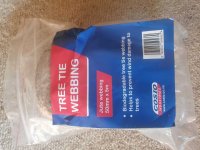quick update on some OA/GL testing that i previously mentioned.
most of the testing is more about handling, making and how hard can you push it before something breaks.
this all done with single broods.
i have one hive with Swedish cloth with 1.5 mix. the bees didn't like walking on it to start with, but after a week they seam fine. its placed under the wire excluder so there is bee gap. they walk on it and go up through the excluder just fine.
have one with bamboo cloth. (thx @Dansar). its actually works out to be the right size, holding the right about of mixture, if you fold it in half.
however the bees simply avoid it. they don't walk on it, tho it looks like some chewing on the edges. thats looking like a big fail. again its lying on the top bars under the excluder. it kinda looks wetter.
one hive currently has 6 cardboard strips (the gib packer stuff), so about a double dose. placed from frame 2 to 8. i found that most of the laying had stopped on most frames except frames 1 and 10. however i checked recently and they are all brood again. this hive is not tested for mites, its purely a survival test. a little surprised there's no pile of dead bees.
is the lack of lay a bad thing? on one hand it slows the hives progress, but it also provides a break so that all the mites can be killed. maybe having too much treatment might be a good thing.
i have a couple of hives with mite testing, one with strips and one without. results won't be for another month yet. also its a only a sample of one so @Dave Black don't shoot me just yet.
also noticed almost no residue comes off the strips after a few weeks, which makes it much safer to handle. i find the vertical strips much easier to handle than the flat swedish cloth etc when working the hives.
my suspicions at the moment is that the nz 1.5 mix spreads easily early on providing a knock down effect, but may suffer from very little mix being in the strips. from what i can read online is the 1:1 usa mix takes longer to get spread around. using a lot more mix to get similar results.
so whats best, high early dose for knock down or one that continues for a long time?
most of the testing is more about handling, making and how hard can you push it before something breaks.
this all done with single broods.
i have one hive with Swedish cloth with 1.5 mix. the bees didn't like walking on it to start with, but after a week they seam fine. its placed under the wire excluder so there is bee gap. they walk on it and go up through the excluder just fine.
have one with bamboo cloth. (thx @Dansar). its actually works out to be the right size, holding the right about of mixture, if you fold it in half.
however the bees simply avoid it. they don't walk on it, tho it looks like some chewing on the edges. thats looking like a big fail. again its lying on the top bars under the excluder. it kinda looks wetter.
one hive currently has 6 cardboard strips (the gib packer stuff), so about a double dose. placed from frame 2 to 8. i found that most of the laying had stopped on most frames except frames 1 and 10. however i checked recently and they are all brood again. this hive is not tested for mites, its purely a survival test. a little surprised there's no pile of dead bees.
is the lack of lay a bad thing? on one hand it slows the hives progress, but it also provides a break so that all the mites can be killed. maybe having too much treatment might be a good thing.
i have a couple of hives with mite testing, one with strips and one without. results won't be for another month yet. also its a only a sample of one so @Dave Black don't shoot me just yet.
also noticed almost no residue comes off the strips after a few weeks, which makes it much safer to handle. i find the vertical strips much easier to handle than the flat swedish cloth etc when working the hives.
my suspicions at the moment is that the nz 1.5 mix spreads easily early on providing a knock down effect, but may suffer from very little mix being in the strips. from what i can read online is the 1:1 usa mix takes longer to get spread around. using a lot more mix to get similar results.
so whats best, high early dose for knock down or one that continues for a long time?


